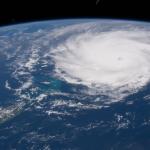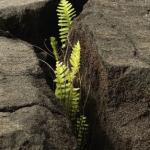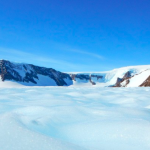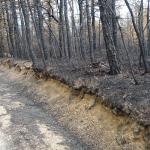Lesson Plans & Activities
Geomagnetism in the MESA Classroom: An Essential Science for Modern Society
This is a four-part after-school module designed to suit the interest and abilities of your students and can be modified to fit the time you have available.
Students explore geomagnetism with compasses, navigation exercises, and a geo-caching activity and explore aurora and space weather, with an optional field trip to the National Oceanic and Atmospheric Administration.Lesson
Middle School

Arctic Feedbacks: Not All Warming Is Equal
This storyline unit consists of 10 lessons, each tied to NGSS Earth's systems standards
In this MS/HS unit, students engage with 360° virtual reality tours, authentic Arctic datasets, and app-based labs to construct models and explanations for the unit driving question, "Why might the Arctic be warming twice as fast as the rest of the world?"Unit
Polar Science
Middle School
High School
Photosynthesis, Respiration, and the Short-Term Carbon Cycle
Project EXTREMES lessons were written to be stand alone lessons but can be incorporated into a larger unit.
This lesson is focused on the short-term cycling of carbon and is designed to put the processes of photosynthesis and respiration within a global perspective.
Lesson
Middle School

Antarctic Life & Albedo
This is the third lesson of a five-part curriculum about Antarctic physical environments and ecosystems.
In this lesson, students explore the importance of albedo (or reflectivity) to penguins and the surfaces they inhabit and learn how penguin colonies may be mapped using satellites.
Lesson
Polar Science
High School
Why does the ice melt on the “Frozen Continent”?
This is the fourth lesson of a five-part curriculum about Antarctic physical environments and ecosystems.
After exploring albedo in the previous lesson, this lesson expands on more factors that lead to surface ice melt in Antarctica.Lesson
Polar Science
High School
Soil Percolation: Where Does the Rain Go?
Project EXTREMES lessons were written to be stand alone lessons but can be incorporated into a larger unit.
This lesson activity has students conduct an experiment that reinforces one component of the water cycle.
Lesson
Elementary School

Module 1: Exploring the Glacier Basin System
This Module consists of five Units, walking students through an overview of the glacier basin system, exploring glacier mass balance, albedo, and surface melt, and looking inside and underneath the glacier. The Units also cover the transition from the glacier margin to land and system responses to climate change.
Earth's polar environments have undergone rapid change during the 21st century and scientists have generated important new data and made groundbreaking insights. Despite growing interest to bring polar-focused material into the undergraduate classroom, curriculum development has lagged. Polar Space and Places, or PolarPASS, is connecting polar-focused material with innovative teaching methods to advance STEM undergraduate education and increase polar knowledge.Lesson
Polar Science
High School
University/College

Module 2: Long-term Spatial Transformations of the Glacier Basin System
Module 2 is designed to follow after Module 1. Instructors may choose to use Module 2 independently, but may want to consider some additional introductory materials if they are not beginning with Module 1. Module 2 consists of four Units. The Units begin by exploring past ice margin retreat and processes of ice margin retreat and elevation change. The material then explores natural climate variability and anthropogenic forcings, and then examines potential future ice margin response to climate change.
Earth's polar environments have undergone rapid change during the 21st century and scientists have generated important new data and made groundbreaking insights. Despite growing interest to bring polar-focused material into the undergraduate classroom, curriculum development has lagged. Polar Space and Places, or PolarPASS, is connecting polar-focused material with innovative teaching methods to advance STEM undergraduate education and increase polar knowledge.Lesson
Polar Science
High School
University/College









